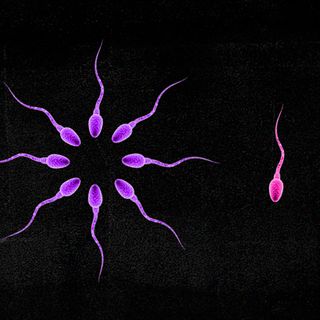
Why Oxygen on a Planet’s Surface May Not Indicate Habitability
While oxygen is crucial for life, it is a reactive element that can originate from abiotic sources too.

With increasing resource depletion and fears of overpopulation — and aided by improved space technology — researchers are exploring the possibility of inhabiting other planets in the universe. The presence of oxygen is often one of the markers scientists consider to determine whether a planet other than Earth could host this planet’s living systems. Around 20% of Earth’s atmosphere comprises oxygen, and the element also makes up almost half of the planet’s crust and mantle. However, new research now suggests that the presence of oxygen on a planet’s surface by itself may not be a strong enough indicator of its ability to support life. How oxygen is produced, on the other hand, is a stronger indicator.
Multicellular life on Earth began with the generation of surplus oxygen on the planet a couple of billion years ago and is speculated to end in another billion years or so when Earth will exhaust all of its supply of this crucial gas. It makes sense, then, for scientists to consider the presence of oxygen in exoplanets as a signature of the presence of life there. A new study published in the journal Science Advances earlier this year now suggests that this could be a flawed approach.
The oxygen in Earth’s atmosphere is largely a waste product generated during photosynthesis, which means that it originates from a life process, and then goes to support other life forms on the planet. However, in the current study, the scientists exhibit how oxygen on a planet may also stem from other, non-life, pathways.
Abiotic oxygen — named so because it does not originate from a life process — could explain why planets may contain oxygen molecules in the atmosphere without necessarily supporting life forms. Earlier research on abiotic forms of oxygen displayed how the sun’s UV light may help create molecular oxygen from carbon dioxide without involving life forms. The current study aims at understanding whether the presence of oxygen in space — in the absence of life and life processes — could have abiotic origins and pathways.
Related on The Swaddle:
Lack of Oxygen Will End All Life on Earth a Billion Years From Now, Say Scientists
For their research, the scientists considered sulfur dioxide, a toxic gas that is present in huge volumes in several celestial bodies — large volumes of which are ejected into the atmosphere during volcanic eruptions — and examined how the compound’s molecules reacted to radiation from the sun. The scientists referred to data from an earlier experiment that involved exposing sulfur dioxide molecules to radiation. “We dug up some old data from 2005 where we had irradiated sulphur dioxide with photons in our lab. We analysed the data and… calculated what quantities of energy created which molecular structures,” explained Raimund Feifel, a co-author in a press release.
The scientists observed that on being exposed to high energy radiation, sulfur dioxide molecules underwent double ionization and changed their shapes. The sulfur atom, originally sandwiched between two oxygen atoms, shifts to one side on double ionization, leaving the two oxygen atoms adjacent to each other. Måns Wallner, a co-author of the study, explained in a press release, “upon double ionization, two of the bound electrons in the molecule get ejected and can lead to changes in the angle between the atoms in the molecule… the atoms switch places, and the molecule takes on a whole new shape.”
As the molecules change their shape, the sulfur atom may fall off from the compound, leaving behind a positively charged oxygen molecule. This sequence of events can explain the presence of oxygen on some surfaces in the solar system that do not support life. Europa, Ganymede, and Io, moons of Jupiter, are examples of such surfaces. Notably, Io is the most volcanic place in the entire solar system, so the possibility of it supporting Earth-like life systems is already ruled out. Europa and Ganymede too, do not have enough oxygen to support any of Earth’s life.
Oxygen remains a vital component of supporting Earth-like life systems in the universe. But this current study highlights how the mere presence of oxygen on a surface may not be reason enough to consider it as a possible new habitat. The pathway of that oxygen plays as much a crucial role. As such, it remains vital that while the search for alternative habitats continues, enough importance is also given to preserving Earth and its resources.
Amlan Sarkar is a staff writer at TheSwaddle. He writes about the intersection between pop culture and politics. You can reach him on Instagram @amlansarkr.
Related


Sperms Cooperating With Each Other Have a Greater Chance of Success Than Loner Sperms, Shows Study
